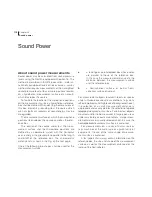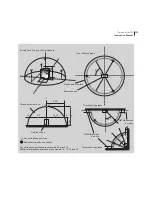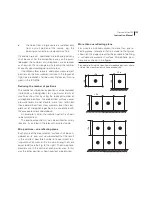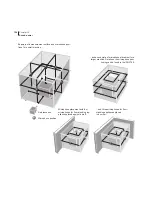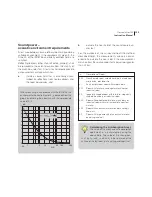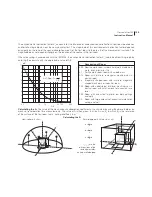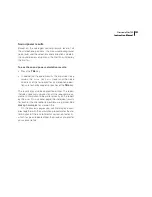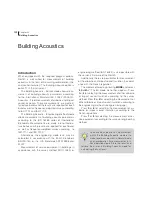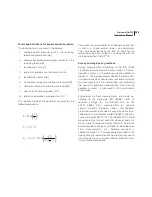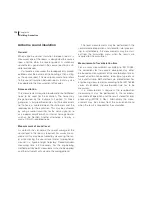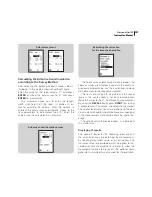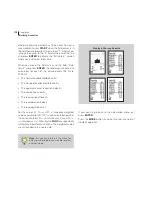
126
Chapter 23
Sound power
Specific requirements
Examples of permitted reflecting planes outdoors in-
clude compacted earth, artificial surfaces such as
concrete or sealed asphalt, while for indoor measure-
ments, the reflecting plane is usually the floor.
Take care to ensure that the reflecting surface does
not radiate any appreciable sound energy due to vi-
bration.
The reflecting surface must be larger than the pro-
jection of the measurement surface on it.
The sound absorption coefficient (details on this
are given in the ISO 354) of the reflecting plane should
preferably be less than
0.1
over the frequency range of
interest. This requirement is usually fulfilled when out-
door measurements are made over concrete, sealed
asphalt or stone surfaces. For reflecting planes with
higher sound absorption coefficient, e.g. grass- or
snow-covered ground, the measurement distance
shall not exceed 1 m. For indoor measurements, wood-
en and tile floors are also permitted.
No reflecting parts that are not part of the source
under test shall be located within the measurement
surface.
The K
2A
factor
The environmental correction factor
K
2A
accounts for
the influence of undesired sound reflections from room
boundaries and/or reflecting object near the source
under test.
The magnitude of this factor depends principally
on the ratio of the sound absorption area
A
of the test
room to the area
S
of the measurement surface. The
magnitude does not depend strongly on the location
of the source in the test room.
In the ISO 3746, the environmental correction factor
K
2A
is given by
K
2A
= 10lg[1 + 4(
S/A
)] dB
where
A
is the equivalent sound absorption area in the
room at 1 kHz, in m
2
S
is the measurement surface area, in m
2
.
Environmental corrections as a function of
A/S
are
illustrated on the previous page.
Approximate method
The mean sound absorption coefficient a of the sur-
face of the room may be estimated using the table
shown on the next page. The value
A
is given, in m
2
,
by the formula:
A = a·S
V
in which,
a
is the mean sound absorption coefficient, given
for A-weighted quantities in the table a few pages
ahead.
S
V
is the total area of the boundary surfaces of the
test room (walls, ceiling and floor), in m
2
.
Using reverberation time instead
The classic definition of absorption area is the well-
known Sabine’s formula:
A = 0.161 —
in which,
V
T
Summary of Contents for nor140
Page 4: ......
Page 16: ......
Page 17: ...nor140 SOUND ANALYSER ...
Page 18: ......
Page 212: ...194 ...
Page 218: ......







